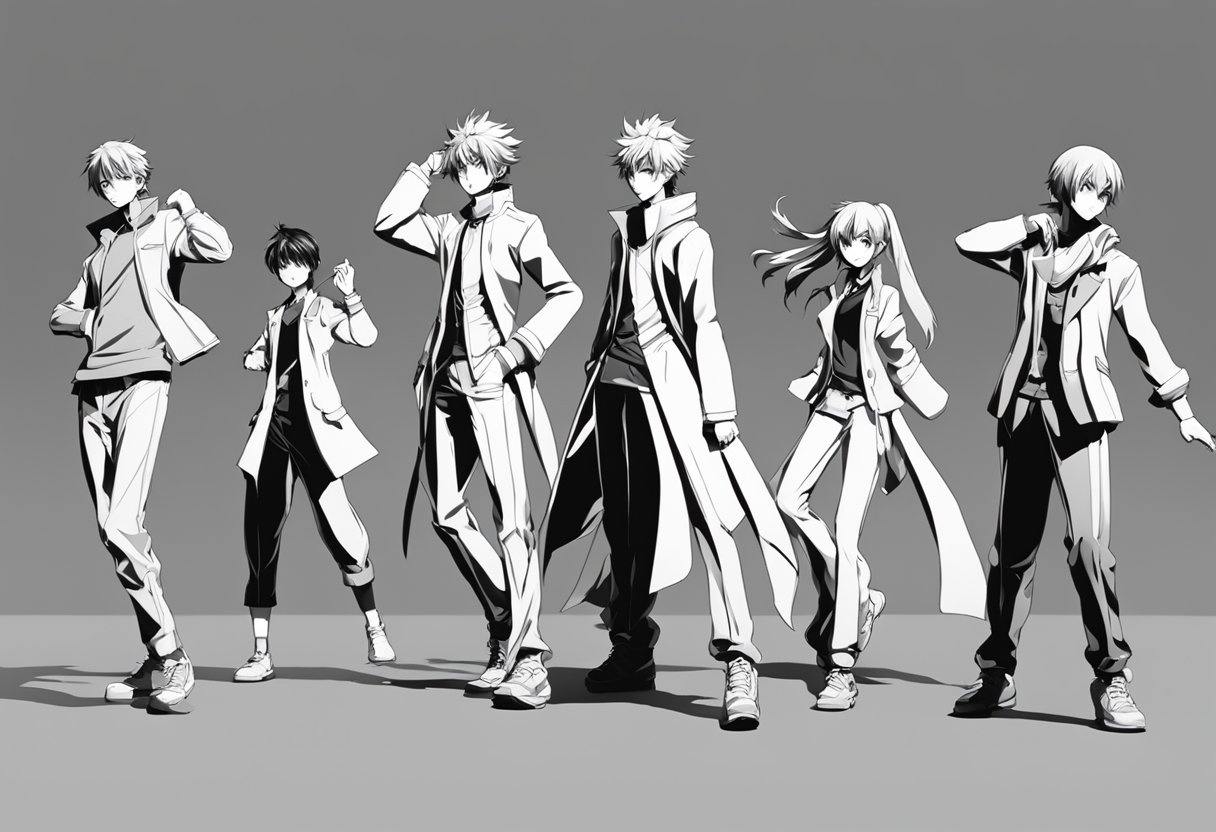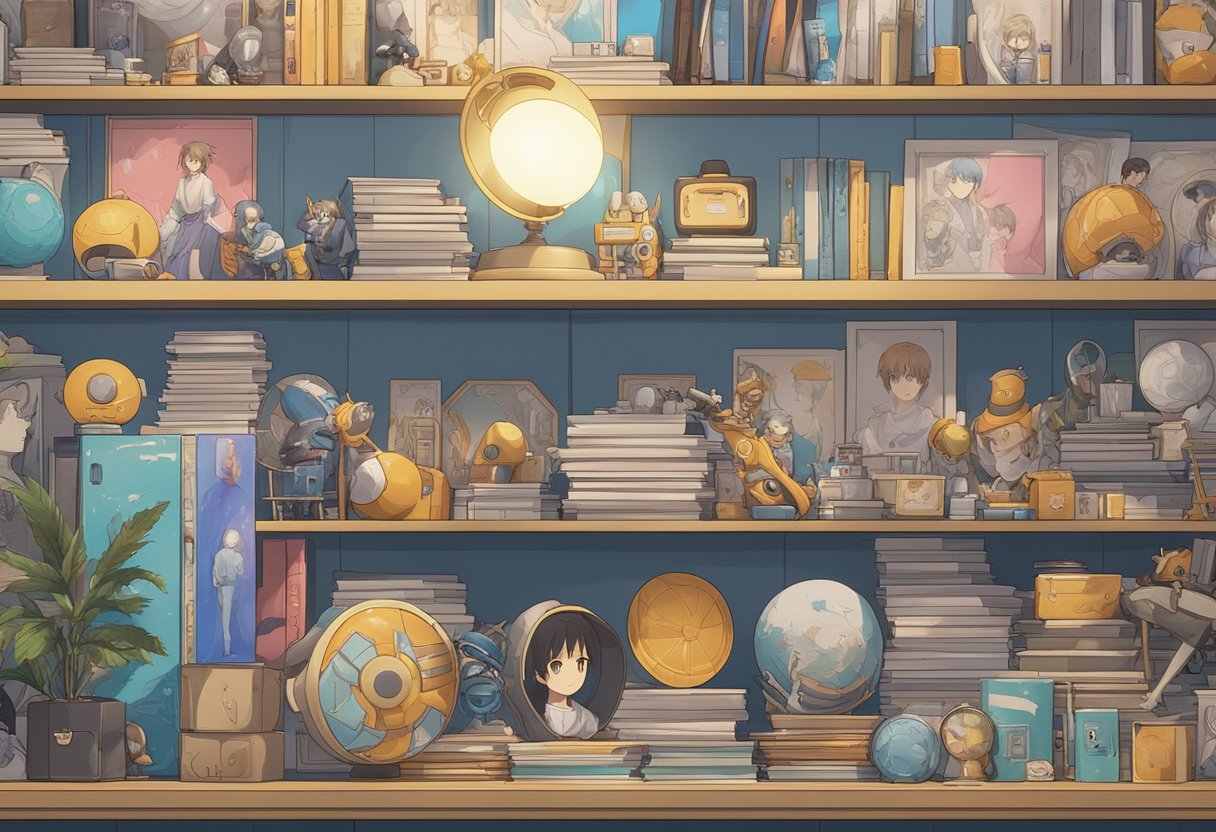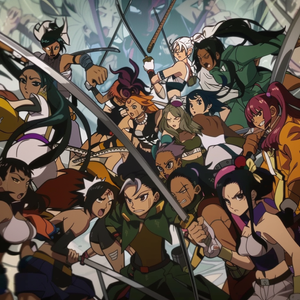Anime character 3D models bring your favorite characters from Japanese animation to life in a digital space. These models are detailed and often highly customizable, enabling users to adjust their favorite characters’ poses, expressions, and settings. This revolution in digital art not only fuels creativity but also enhances projects in gaming, animation, and virtual reality.

Platforms like Sketchfab and TurboSquid offer a plethora of free and premium 3D models. Users can find models of popular characters from series like "Jujutsu Kaisen" and "Etrian Odyssey," which are available for download and immediate use. With such resources, creators can easily incorporate these models into their work, whether for personal projects or commercial use.
For those new to 3D modeling, sites like CGTrader provide free models that can serve as a starting point. Beginners can learn a lot by studying these models and even modifying them to get a deeper understanding of 3D art. By accessing high-quality and detailed models, enthusiasts can not only enjoy their favorite anime in a new medium but also contribute to the growing community of 3D art and animation.
Key Takeaways
- Free and premium 3D anime models are available on platforms like Sketchfab and TurboSquid.
- Beginners can learn 3D modeling by studying and customizing free models from sites like CGTrader.
- High-quality 3D anime models enhance projects in gaming, animation, and collectibles.
Understanding Anime Character 3D Models
Anime character 3D models bring beloved anime characters to life by transforming them into a 3D format. These models often use styles and file types tailored for various applications.
Defining Anime-Style 3D Models
Anime-style 3D models capture the unique aesthetic of anime, which includes exaggerated facial features, such as large eyes and small mouths, and vivid hairstyles. These models often have simplified textures compared to more realistic 3D models, focusing on bold lines and colors.
The key to creating a successful anime character model lies in maintaining the 2D look while adapting it to a 3D space. Artists use tools like Blender or Autodesk Maya to sculpt these models, ensuring they stay true to the original anime art style. Many models are rigged and textured to allow for animation, making them suitable for games and virtual applications.
Types of 3D Files
Different file formats are used for storing and sharing anime character models. Commonly used formats include .blend, .fbx, .obj, and .max. Each format serves different purposes and supports various features.
- .blend: This format is specific to Blender and includes all elements of the scene, such as geometry, textures, and animations.
- .fbx: Widely used for exchanging data between 3D software, it maintains a consistent look across platforms.
- .obj: A simple format that stores 3D geometry but does not include animations or advanced texture information.
- .max: Used with 3ds Max, it encompasses complex scene data including lighting and materials.
Other formats like .dae, .x, and .ma are also used depending on the specific requirements of the project. These formats ensure compatibility across different software and workflows, aiding in the seamless creation and utilization of anime-style 3D models.
Creating Anime Characters in 3D
Creating 3D anime characters involves several specific techniques and tools. Key aspects include modeling, texturing and shading, and rigging and animation.
Modeling Techniques
Creating a 3D anime character starts with modeling. Tools like Blender, Maya, and ZBrush are popular for their versatility. Artists often begin with lowpoly models for simplicity, ensuring the character's basic shape and proportions are accurate. The lowpoly model can then be refined into a high-detail version.
Blender, for instance, offers tools for sculpting and mesh editing, making it suitable for creating intricate details. Maya is favored for its robust modeling features, while ZBrush excels in high-detail, organic modeling. Each software has unique strengths, and choice depends on the artist's needs and preferences.
Texturing and Shading
Once the model is complete, the next step involves texturing and shading. This process starts with creating UV maps to unwrap the 3D model into a 2D plane. By doing this, artists can apply textures accurately.
Tools like Substance Painter and Blender are ideal for this task. Artists use these tools to paint textures directly onto the model. Shading involves defining how surfaces interact with light. Programs like Cinema 4D, Blender, and Maya provide options for creating realistic or stylized shaders, crucial for achieving the specific anime look.
Rigging and Animation
The final major step is rigging and animation. Rigging involves constructing the skeleton of the character and defining how it moves. Software like Blender, Maya, and Unity are widely used for this purpose. A rigged character with a flexible skeleton is essential for smooth and natural movement.
Once rigged, the character can be animated. Animators create sequences of poses to simulate motion, which is vital in bringing the character to life. Each software offers unique tools and workflows, making it important to choose the right one based on the project's requirements. Rigging and animation often require a deep understanding of both the software and anatomy to achieve convincing results.
Sourcing Free 3D Anime Models
Finding free 3D anime character models online can save both time and money. It's important to consider the variety of websites available and to understand the licensing terms for proper usage.
Websites for Free 3D Models
Several platforms offer free 3D anime models ideal for different projects. TurboSquid provides a variety of models in formats such as 3ds, max, c4d, maya, blend, obj, and fbx. These models come with features like low poly, animation, rigging, and VR compatibility, making them versatile for diverse applications.
Sketchfab is another popular site for free 3D anime models. It allows users to view, buy, and download a wide range of models. The models on Sketchfab are especially good for those who need high-quality visuals for animation and gaming.
Lastly, Free3D offers 16 free anime character models in formats like .blend, .obj, .c4d, .3ds, and .max. This site is a good option for finding varied models quickly.
Licensing and Usage Rights
Licensing and usage rights are crucial when using free 3D models. Many of these models are shared under Creative Commons licenses, which often require attribution. For example, the Anime Character model by Legend on Sketchfab is free to use but may require crediting the creator.
Some models might be free for personal use only and not for commercial purposes. On TurboSquid, it’s essential to check the licensing information carefully to understand what you can and cannot do with the models.
Always review the licensing terms before downloading and using the 3D models to avoid legal issues. In some cases, you might need to contact the creator for more specific usage permissions.
Anime Character Models for Gaming
For game developers, anime character models must be carefully optimized for game engines and properly integrated into games. This ensures a smooth and visually pleasing experience for players.
Optimizing Models for Game Engines
Optimizing 3D models is crucial for performance. Low-poly models are often used because they run smoothly on various devices. A game stylized cartoon man 3D model might range from a few hundred to several thousand polygons, balancing detail and efficiency.
Textures need to be compressed without sacrificing quality. This helps to reduce the file size and memory usage. Tools like Blender are popular for creating and optimizing these models. Animation should also be considered, with rigging done in a way that supports a wide range of movements.
Integrating Character Models into Games
Integration involves importing the 3D models into the game engine, such as Unity or Unreal Engine. File formats like FBX and OBJ are commonly used for this purpose. These formats are versatile and widely supported.
Once imported, developers apply textures, materials, and animations. Consistent testing is important to ensure the character behaves as expected in different game scenarios. Low-poly anime characters are particularly popular in mobile games due to their balance of visual appeal and performance efficiency.
For those seeking anime character 3D models for games, platforms like TurboSquid and Free3D offer a variety of free and paid options.
High Quality and Detailed Anime Models
Creating high-quality and detailed anime models involves sculpting intricate characters and using high-resolution textures. These techniques ensure the final output meets the high standards expected by enthusiasts and professionals alike.
Sculpting Detailed Characters
Sculpting detailed characters is crucial to achieving high-quality anime models. Tools like ZBrush and Blender are commonly used by artists to meticulously design every aspect of the character. The process begins with creating a basic mesh, which is then gradually refined.
Special attention is given to the facial features and clothing details of the characters. For example, in creating a Megaman NT Warrior, artists focus on accurately capturing the unique features that define the character. Using advanced sculpting tools allows for the creation of lifelike and expressive anime figures.
By incorporating high polygons and using .fbx formats, artists ensure that the models are highly detailed and ready for rendering. The final output may even be suitable for 3D printing, allowing for tangible representations of popular anime characters.
High-Resolution Textures
High-resolution textures play a vital role in bringing anime models to life. These textures add depth and realism, highlighting details such as skin tone, fabric patterns, and shading.
Artists use tools like Blender and Photoshop to create and apply these textures. Models like the Ghost Monster benefit significantly from high-resolution textures, which can make the character appear more vivid and detailed.
Implementing high-resolution textures involves mapping the textures accurately onto the 3D model. This requires a careful balance, as overly detailed textures can affect the performance, particularly in real-time rendering scenarios. It is essential to optimize the textures to maintain a high-quality look without compromising on performance.
Lastly, limited edition 3D print models benefit from these textures, offering collectors high-quality, detailed versions of their favorite anime characters.
Anime Figurines and Collectibles in 3D Print
Creating anime figurines and collectibles with a 3D printer involves designing the models and perfecting the finishing touches. These steps ensure high-quality, detailed statues that are true to their animated counterparts.
Designing for 3D Printing
Designing anime characters for 3D printing typically begins with software like 3ds Max or Rhino. These programs help in crafting detailed models that capture the essence of the characters. It's crucial to optimize the models for printing, ensuring the design can be successfully produced by a 3D printer.
The designer should focus on key features such as facial expressions, poses, and costumes. These elements must be accurate to avoid losing the character's distinctive look. Models are often saved in STL format, the standard for 3D printing. Sites like Thingiverse offer a variety of free and premium anime models.
Painting and Finishing Techniques
Post-processing is vital to bringing the printed anime figures to life. After the model is printed, it needs to be cleaned and may require some sanding to remove any imperfections. Painting is the next step, where high-quality paints are used to add vibrant colors and fine details.
Creative techniques like airbrushing can achieve smooth gradients and shading, while hand-painting adds intricate details. Finishing touches like adding gloss or matte varnishes can enhance the final product.
On platforms like Cults 3D, users can find detailed tutorials on painting techniques. High-quality models, such as the $5 Polly - Low Poly Anime Character, show how professional detailing can elevate a simple 3D print into a collectible piece of art.
Popular Character Models and Fan Art

3D models of famous anime characters attract fans and artists alike, offering both detailed recreations and unique interpretations. Community contributions play a significant role, with fan art helping to expand and diversify available 3D models.
Famous Anime Characters
Famous anime characters frequently appear in 3D model collections. For example, Madara Uchiha with his Sharingan activated is a popular model. His detailed features, armor, and iconic eyes are meticulously recreated.
Another popular model is Hollow Knight Grimmchild. This character, known for its dark and mysterious design, captures the eerie yet captivating essence of the game.
Fans also appreciate Low Poly Dark Knight models, which simplify the character's complex design while maintaining its recognizable elements. Artists often create these models for easier rendering and faster performance.
Satomi, an original anime character, showcases a unique anime style. This character’s base model provides a versatile platform for artists to build upon, making it popular among creators looking for a starting point.
Fan Art and Community Contributions
Community contributions play a crucial role in expanding the range of available anime character 3D models. Platforms like Sketchfab and ArtStation allow artists to share their creations, enabling others to view, download, and modify these models.
Fan art often brings fresh perspectives to well-known characters. For instance, community-created versions of Madara Uchiha might feature different poses or styles, adding to the diversity of available models.
Users also contribute by creating models based on less mainstream characters. Such contributions include original interpretations like Satomi, expanding the creative possibilities for artists.
The ongoing efforts of fans and artists ensure that the world of 3D anime models continues to grow and evolve, offering an ever-expanding library of characters and art.
Commercial Use of Anime 3D Models

Anime 3D models are excellent for creating unique content for monetary profit. Key points to consider include monetization, licensing, and intellectual property protection.
Monetization and Commercial Licensing
Anime 3D models can be monetized in various ways. Businesses and individual content creators use these models in games, videos, and virtual reality applications. For example, VRoid Studio offers flexible software for creating 3D models of humanoid avatars, which can be used commercially if proper permissions are obtained.
Creators need to adhere to licensing agreements. Some platforms require Free or Commercial licenses. On Free3D, many anime character models are available under terms that specify if and how they can be used for profit.
Knowing the specific licensing restrictions helps avoid legal issues. Monetizing anime models like an anime girl body low poly or characters like Momon and Monokuma can be lucrative if the proper licenses are secured.
Protecting Intellectual Property
Protecting intellectual property is crucial when using anime 3D models. Users must credit original creators if required and avoid unauthorized modifications. Platforms like ArtStation offer detailed licensing terms that outline how their models can be used, protecting both the creator and user.
It's essential to respect the intellectual property rights associated with characters like Hanabi Hyuga. Additionally, using models from reliable sources ensures that creators are credited, and users avoid legal pitfalls.
By complying with IP rules, users can safely create and distribute commercial content using anime 3D models. This balance maintains industry integrity and supports the creators behind these digital artworks.











Member discussion